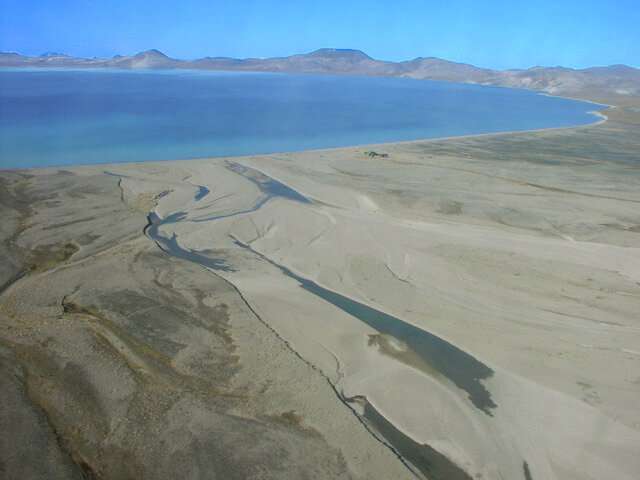Million-year-old Arctic sedimentary record sheds light on climate mystery, researchers find

New research, led by the University of Massachusetts Amherst and published recently in the journal Climate of the Past, is the first to provide a continuous look at a shift in climate, called the Mid-Pleistocene Transition, that has puzzled scientists. Kurt Lindberg, the paper’s first author and currently a graduate student at the University at Buffalo, was only an undergraduate when he completed the research as part of a team that included world-renowned climate scientists at UMass Amherst.
Somewhere around 1.2 million years ago, a dramatic shift in the Earth’s climate, known as the Mid-Pleistocene Transition, or MPT, happened. Previously, ice ages had occurred, with relative regularity, every 40,000 years or so. But then, in a comparatively short window of geological time, the time between ice ages more than doubled, to every 100,000 years. “It’s a real puzzle,” says Isla Castañeda, professor of geosciences at UMass Amherst and one of the paper’s co-authors. “No one really knows why this shift occurred.”
One of the big barriers to understanding the MPT is that very little data exists. The oldest Arctic ice cores only go back approximately 125,000 years. And older sedimentary cores are almost nonexistent, because as ice ages have come and gone, the advancing and retreating ice sheets have acted like enormous bulldozers, scraping much of the exposed land down to bedrock.
However, there is one place in the world, in far northeastern Russia, that is both above the Arctic Circle and which has never been covered by glaciers: Lake El’gygytgyn. This is where the world-renowned polar scientist, Julie Brigham-Grette, professor of geosciences at UMass Amherst and one of the paper’s co-authors, comes in.
In 2009, Brigham-Grette led an international team of scientists to Lake El’gygytgyn, where they drilled a 685.5 meter sediment core, representing approximately the last 3.6 million years of Earth’s history. Lindberg and his co-authors used the portion of this sedimentary core that spanned the MPT and looked for specific biomarkers that could help them ascertain temperature and vegetation. With this information, they were able to reconstruct, for the first time, climactic conditions in the Arctic during the MPT.
While the team did not solve the mystery of the MPT, they did make a few surprising discoveries. For example, an interglacial period, or era when ice was in retreat, known as MIS 31 is widely recognized as having been abnormally warm—and yet the records at Lake El’gygytgyn show only moderate warmth. Instead, three other interglacial periods, MIS 21, 27 and 29 were as warm or warmer. Finally, the team’s research shows a long-term drying trend throughout the MPT.
“This couldn’t have been done without Lindberg’s enthusiasm,” says Castañeda. “I’ve always had lots of undergrads in my lab, and I love working with them. Kurt took off with this project, and did a wonderful job.”
Rewriting the history books: Why the Vikings left Greenland
Kurt R. Lindberg et al, Biomarker Proxy Records of Arctic Climate Change During the Mid-Pleistocene Transition from Lake El’gygytgyn (Far East Russia), Climate of the Past (2021). DOI: 10.5194/cp-2021-66
Citation:
Million-year-old Arctic sedimentary record sheds light on climate mystery, researchers find (2022, March 30)
retrieved 30 March 2022
from https://phys.org/news/2022-03-million-year-old-arctic-sedimentary-climate-mystery.html
This document is subject to copyright. Apart from any fair dealing for the purpose of private study or research, no
part may be reproduced without the written permission. The content is provided for information purposes only.
For all the latest Science News Click Here
For the latest news and updates, follow us on Google News.

